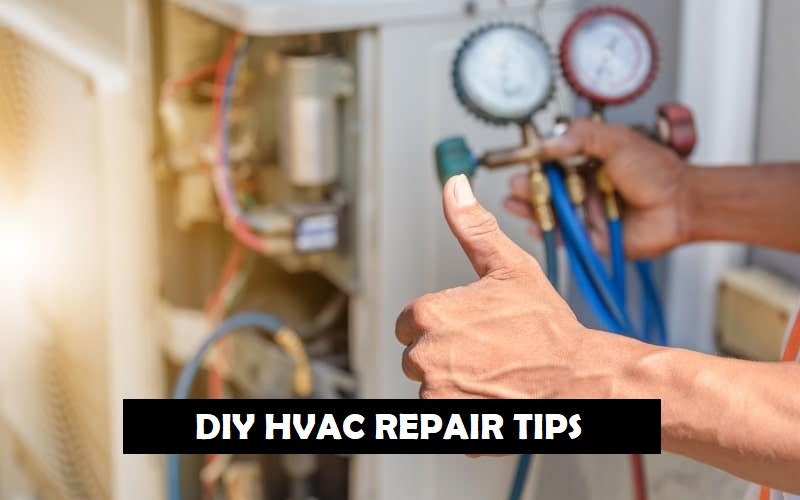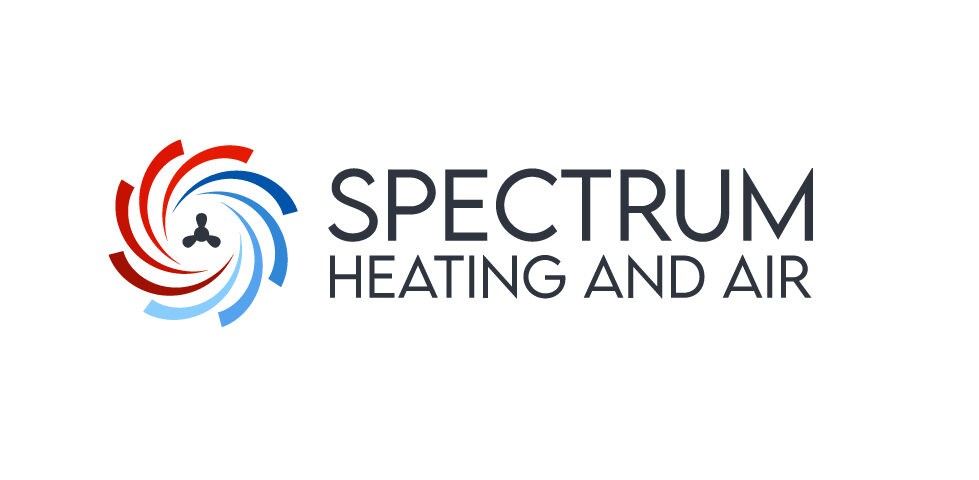When the sweltering heat of summer or the bone-chilling cold of winter sets in, having a fully functional HVAC (Heating, Ventilation, and Air Conditioning) system is nothing short of a lifesaver. It’s your shield against extreme temperatures, ensuring you stay comfortable year-round. However, like any mechanical system, HVAC units can sometimes experience issues that disrupt your comfort zone. While many HVAC problems require the expertise of a professional technician, there are several Do-It-Yourself (DIY) HVAC repair tips and tricks that can help you troubleshoot and resolve common issues. In this comprehensive guide, we’ll delve into the world of DIY HVAC repair, equipping you with the knowledge and skills to keep your HVAC system running efficiently.

Understanding Your HVAC System
Getting to Know Your HVAC System
Before you embark on any DIY HVAC repair journey, it’s imperative to acquaint yourself with the essential components of your HVAC system. This foundational knowledge will empower you to identify potential issues more effectively and perform basic troubleshooting. An HVAC system typically consists of the following key components:
Furnace:
The furnace is responsible for heating your home during the winter months. It burns fuel (such as natural gas or oil) or uses electricity to generate heat, which is then distributed throughout your home.
Air Conditioner:
The air conditioner cools your home during the summer by removing heat from indoor air and expelling it outside. It uses a refrigerant to facilitate the cooling process.
Ductwork:
Ducts are the channels through which conditioned air flows throughout your home. Ensuring that they are clean and free from leaks is essential for efficient HVAC operation.
Thermostat:
The thermostat serves as the control center for your HVAC system. It allows you to set your desired temperature and regulates when the system turns on and off.
Air Filters:
Air filters are responsible for removing dust, allergens, and contaminants from the air circulating through your HVAC system. Clean filters are crucial for maintaining indoor air quality and system efficiency.
Safety First
Before diving into any DIY HVAC repair, remember that safety should always be your top priority. HVAC systems involve electrical components and potentially hazardous materials like refrigerants. Here are some essential safety precautions to take:
Turn Off Power:
Before working on your HVAC system, turn off the power at the electrical panel or shut off the furnace and air conditioner’s circuit breakers. This prevents accidental electrical shocks.
Ventilation:
Ensure that your workspace is well-ventilated when working with HVAC components. Adequate ventilation helps disperse any fumes or gases that may be released.
Protective Gear:
Wear appropriate safety gear, including gloves and safety goggles, to protect yourself from potential hazards.
Know Your Limits:
Recognize that some HVAC issues are complex and require professional expertise. If you’re unsure about a repair, it’s best to consult with a licensed HVAC technician.
Common HVAC Problems You Can Fix
Dirty Air Filters
One of the most common and easily addressable HVAC problems is dirty air filters. Over time, air filters become clogged with dust, debris, and allergens, reducing the efficiency of your system and compromising indoor air quality. Here’s how to tackle this issue:
Step 1 – Locate the Air Filters:
Air filters are typically located in the return air duct or near the furnace. Consult your HVAC system’s manual if you’re unsure where to find them.
Step 2 – Turn Off the System:
Before removing the air filters, turn off your HVAC system to prevent debris from being pulled into the system during the cleaning process.
Step 3 – Remove and Inspect the Filters:
Take out the filters and inspect them. If they’re visibly dirty or clogged, it’s time for cleaning or replacement.
Step 4 – Clean or Replace Filters:
Depending on the type of filters you have, you can either clean them (if they’re washable) or replace them with new ones. Consult the filter manufacturer’s instructions for guidance.
Step 5 – Reinstall Filters:
Once cleaned or replaced, securely reinsert the filters into their respective slots.
Step 6 – Turn On the System:
Turn your HVAC system back on, and you should notice improved airflow and air quality.
Thermostat Troubles
If your home’s temperature doesn’t match the setting on your thermostat, it’s time to troubleshoot thermostat issues. Common problems include:
Inaccurate Temperature Reading:
If your thermostat is displaying an inaccurate temperature, it can lead to discomfort and energy waste.
Troubleshooting Steps:
- Check the thermostat’s location. Ensure it’s not exposed to direct sunlight or drafts.
- Calibrate the thermostat according to the manufacturer’s instructions to ensure accurate readings.
- Replace the thermostat’s batteries if it’s battery-operated.
Airflow Problems
Insufficient or uneven airflow can result in certain areas of your home not receiving adequate heating or cooling. Here’s how to address airflow issues:
Step 1 – Check Vents and Registers:
Ensure that all vents and registers in your home are open and unobstructed. Furniture and curtains can sometimes block airflow.
Step 2 – Inspect Air Ducts:
Examine your ductwork for visible leaks or damage. Sealing any leaks with duct tape or mastic can improve airflow.
Leaky Ducts
Leaky ducts are a common source of energy loss and reduced HVAC efficiency. Detecting and addressing duct leaks is crucial:
Step 1 – Locate the Leaks:
Turn on your HVAC system and feel around the ducts for any air leaks. You can also use a smoke pencil or incense stick to detect drafts.
Step 2 – Seal the Leaks:
For small leaks, use foil tape or mastic sealant to seal the gaps. For larger leaks or damaged ducts, consider consulting a professional.
Tools and Materials You’ll Need
Essential Tools
Before you begin your DIY HVAC repair journey, it’s essential to have the right tools at your disposal. Here’s a list of basic tools that can come in handy:
Screwdrivers (Phillips and Flathead):
Used for removing panels and accessing components.
Adjustable Wrench:
Helps with tightening or loosening nuts and bolts.
Voltmeter:
Used to check electrical connections and voltages.
Pliers:
Useful for gripping and bending small components.
Duct Tape:
Ideal for sealing minor duct leaks temporarily.
Replacement Parts
In addition to tools, having some replacement parts readily available can save you time and effort during HVAC repairs. Consider keeping the following replacement parts on hand:
Air Filters:
Regularly replacing air filters is essential for maintaining system efficiency.
Thermostat Batteries:
Fresh batteries ensure accurate thermostat readings.
Duct Sealing Materials:
Foil tape and mastic sealant for addressing duct leaks.
Fuses:
Spare fuses can be a lifesaver if your HVAC system’s fuse blows.
Step-by-Step DIY HVAC Repair
Now that you’re equipped with the necessary knowledge, tools, and safety precautions, let’s embark on a step-by-step journey to address common HVAC issues.
Step 1 – Turn Off Power
Before you perform any DIY HVAC repairs, it’s crucial to turn off the power to your HVAC system to prevent electrical accidents. Here’s how:
Locate the Electrical Panel:
Find your home’s electrical panel and identify the circuit breaker or fuse that controls your HVAC system.
Turn Off the Circuit Breaker or Remove the Fuse:
Flip the circuit breaker switch to the “off” position or remove the HVAC system’s fuse.
Verify Power Is Off:
Double-check that power is disconnected by trying to turn on your HVAC system from the thermostat. It should remain inactive.
Step 2 – Check the Thermostat
A malfunctioning thermostat can lead to temperature discrepancies in your home. Let’s troubleshoot:
Verify the Thermostat’s Location:
Ensure that your thermostat is not exposed to direct sunlight, drafts, or heat sources, as this can affect its accuracy.
Calibrate the Thermostat:
Consult your thermostat’s user manual to learn how to calibrate it for accurate temperature readings.
Replace Thermostat Batteries:
If your thermostat uses batteries, replace them if they’re low or dead.
Step 3 – Inspect and Clean Air Filters
Dirty air filters can impede airflow and reduce HVAC system efficiency. Here’s how to address this issue:
Locate the Air Filters:
Identify the air filters in your HVAC system, typically found in the return air duct or near the furnace.
Turn Off the System:
Before removing the air filters, turn off your HVAC system to prevent debris from being pulled into the system during cleaning.
Remove and Inspect the Filters:
Take out the filters and inspect them. If they’re visibly dirty or clogged, they need cleaning or replacement.
Clean or Replace Filters:
Depending on the type of filters you have, you can either clean them (if they’re washable) or replace them with new ones. Follow the manufacturer’s instructions.
Reinstall Filters:
After cleaning or replacing, securely reinsert the filters into their slots.
Turn On the System:
Restart your HVAC system, and you should immediately notice improved airflow and air quality.
Step 4 – Examine Air Ducts
Leaky air ducts can lead to energy waste and reduced HVAC efficiency. Let’s address this issue:
Step 1 – Locate Leaks:
Turn on your HVAC system and inspect the ducts for any visible leaks or gaps.
Step 2 – Seal the Leaks:
For small leaks, use foil tape or mastic sealant to seal the gaps. Ensure a tight seal to prevent air loss.
When to Call a Professional
While DIY HVAC repair tips can help you address common issues and improve system efficiency, it’s essential to recognize your limits. Some HVAC problems are complex and require the expertise of a licensed HVAC technician. Here are some instances when it’s best to call a professional:
- Refrigerant Issues: Handling refrigerants requires special training and equipment due to environmental regulations.
- Electrical Problems: If you’re dealing with electrical issues, such as faulty wiring or a malfunctioning control board, it’s safer to consult a professional.
- Complex Repairs: When the repair involves major components like the compressor or heat exchanger, it’s best left to experts.
- Warranty Considerations: Attempting DIY repairs on a newer HVAC system may void your warranty. Consult your manufacturer’s warranty terms.
In conclusion, DIY HVAC repair tips empower homeowners to address common issues and improve the efficiency of their HVAC systems. However, it’s crucial to prioritize safety and recognize when a problem exceeds your expertise. By following the guidelines and safety precautions discussed in this comprehensive guide, you can become a more informed and proactive homeowner when it comes to HVAC maintenance and troubleshooting. Maintaining a comfortable and efficient home is within your reach with the right knowledge and tools.




